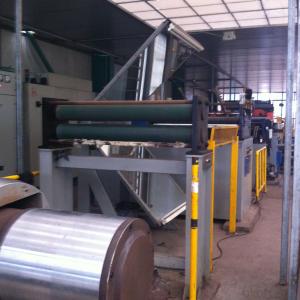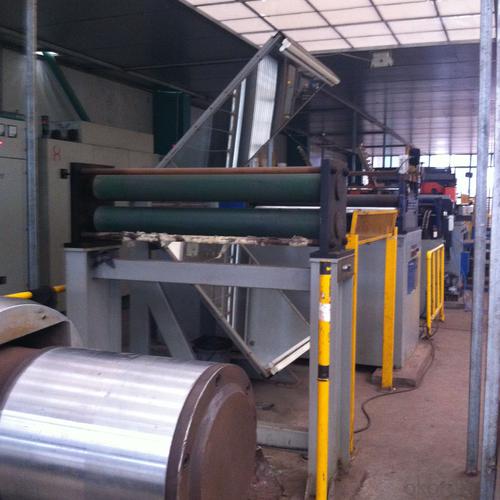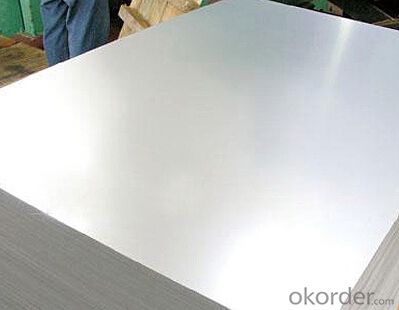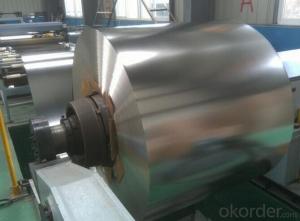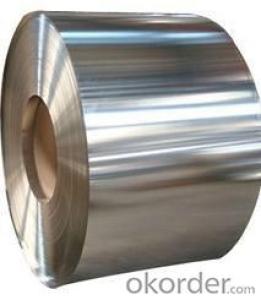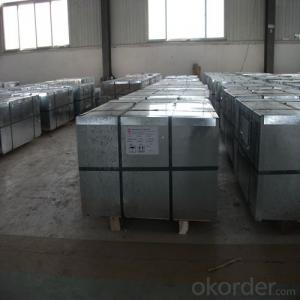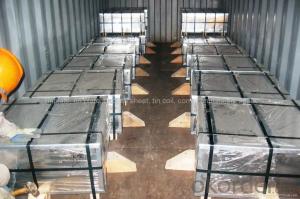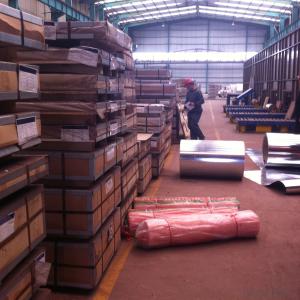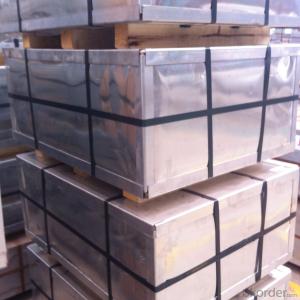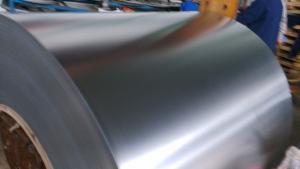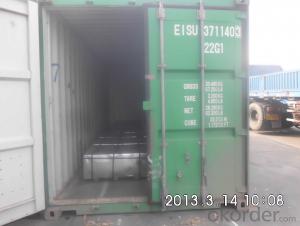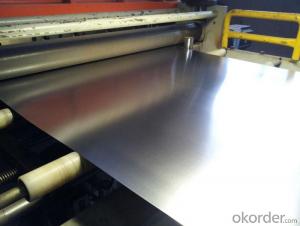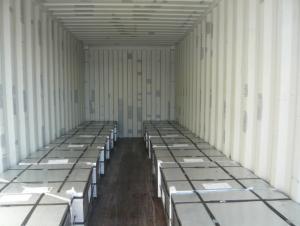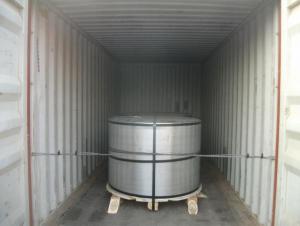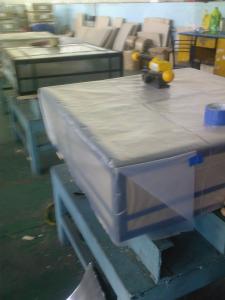Tin Free Steel MR Grade for Food Can Use
- Loading Port:
- China main port
- Payment Terms:
- TT OR LC
- Min Order Qty:
- 25 m.t.
- Supply Capability:
- 30000 m.t./month
OKorder Service Pledge
OKorder Financial Service
You Might Also Like
1. Products: Tin Free Steel
Tinplate and TFS are widely used for making all types of containers such as artistic cans, tea cans, painting cans, chemical package cans and metal printing etc. Its applications are not limited to containers; recently, they have also been used for making electrical machinery parts and many other products.
2. Specification:
Our goods enjoyed high quality both at home and abroad. We can supply tin free steel as follows:
Technical standard | JISG3315 and GB/T24180 - 2009 (BS EN 10202:1990) |
Steel Type | MR / SPCC |
Thickness | From 0.15mm to 0.50mm (Tolerance +/- 0.01mm) |
Width | Normally 600-1050mm (Tolerance +3/-0 mm) |
Coating | Total chromium min 30mg/m2 max 140mg/m2 |
Temper & Annealing | T1-T5, DR7-8, TS230-TH435, T49-T65(+/- 4) |
Surface Treatment | Bright & Fine Stone & Stone & Silver & Matt |
Payment terms | Letter of Credit (L/C), Telegraphic transfer (T/T) |
Price terms | CFR & CIF price term |
Delivery time | Within 60 days after received L/C or T/T down payment |
Packing | High quality shipping packing which contains thin plastic film, rust-proof paper, metal cover, metal angles and strap sand pallet. |
Minimum order Quantity(MOQ) | 25 metric tons (1X 20'' container) |
3. Pictures:
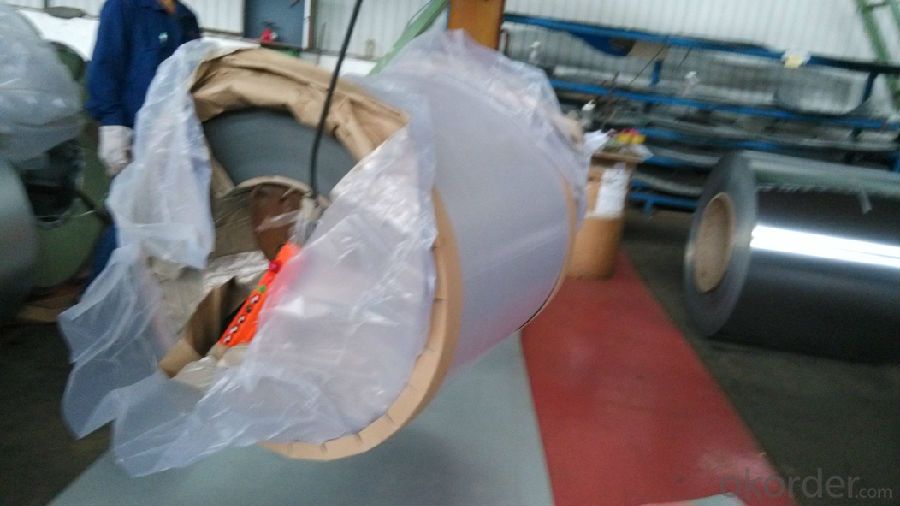
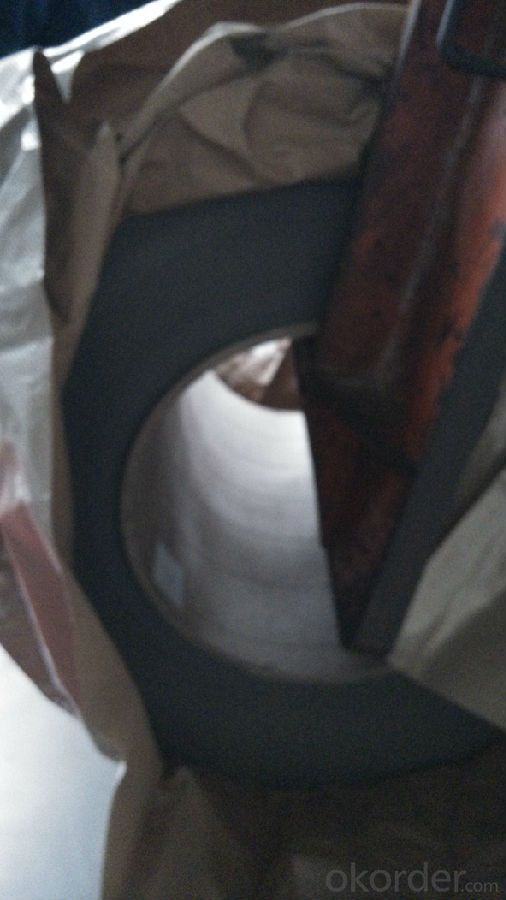
4. Features of the factory price/ tin free steel/tinplate/tfs/tmbp/etp/spte:
Beautiful Appearance
Excellent Paintability & Printability
Excellent Formability & Strength
Excellent Corrosion Resistance
Excellent Solderability & Weldability
5. FAQ:
We are one of the main producers in China for tinplate, tin free steel and also TMBP. At present, our productivity is more than 450000 MT/year.
For more information about our products or company, pls contact us freely.
- Q: How is tinplate used in the pharmaceutical industry?
- Tinplate is commonly used in the pharmaceutical industry for packaging purposes. It is often utilized to create metal containers such as cans or tubes to store various types of medications, ointments, creams, or powders. Tinplate provides a durable and corrosion-resistant packaging solution that helps protect the pharmaceutical products from external factors like moisture, light, and air, ensuring their quality and extending their shelf life. Additionally, tinplate containers can be easily sealed to maintain product integrity and provide tamper-evident features, offering an added layer of safety for consumers.
- Q: How does tinplate perform in terms of gas barrier properties?
- Tinplate exhibits excellent gas barrier properties, making it an effective material for packaging perishable goods and preventing the ingress of oxygen, moisture, and other gases.
- Q: Can tinplate be used for packaging perishable goods?
- Yes, tinplate can be used for packaging perishable goods. Tinplate is a material that is resistant to corrosion and can provide a protective barrier against moisture, light, and oxygen, which are factors that can cause spoilage in perishable goods. Additionally, tinplate containers can be sealed tightly to maintain the freshness and quality of the perishable products.
- Q: What are the main applications of tinplate in the furniture industry?
- Tinplate is widely used in the furniture industry for various applications such as decorative elements, hardware components, and protective coatings. It provides a durable and corrosion-resistant surface finish, making it ideal for metal furniture pieces. Tinplate is also commonly used in the production of metal furniture frames, as it offers excellent strength and stability. Additionally, tinplate can be utilized for intricate designs and embossing, enhancing the aesthetic appeal of furniture items.
- Q: How does tinplate contribute to the overall versatility of packaging?
- Tinplate contributes to the overall versatility of packaging by offering a wide range of benefits. Its durability, corrosion resistance, and ability to withstand high temperatures make it ideal for preserving and protecting various products. Tinplate can be easily molded into different shapes and sizes, making it suitable for diverse packaging requirements. Additionally, its metallic appearance provides an attractive and premium look to the packaging, enhancing the brand image. Overall, tinplate's versatility makes it a popular choice for a wide range of products, from food and beverages to cosmetics and electronics.
- Q: Is tinplate resistant to corrosion?
- Yes, tinplate is highly resistant to corrosion due to the protective layer of tin that is electroplated onto the surface of the steel.
- Q: What are the main applications of tinplate in the toy industry?
- Tinplate is commonly used in the toy industry for various applications. It is primarily utilized for creating tin toys or tinplate toys, which are highly durable, lightweight, and have a nostalgic appeal. Tinplate allows for intricate designs and vibrant colors, making it suitable for producing toy cars, trains, robots, and other figurines. Additionally, its corrosion resistance properties ensure longevity, making tinplate an ideal material for toys that withstand rough play and outdoor conditions.
- Q: How is tinplate used in the production of aerosol valves?
- Tinplate is used in the production of aerosol valves as it provides a durable and corrosion-resistant material for the valve components. It helps to maintain the integrity of the valve, ensuring a reliable and leak-proof seal. Additionally, tinplate can be easily formed into intricate shapes, allowing for the precise design and functionality required in aerosol valves.
- Q: How big is the difference between tinplate and stainless steel 316L?
- It will be the steel strength and formability and corrosion resistance of tin soldering, and beautiful appearance with a material, corrosion resistant, non-toxic, high strength and good ductility properties.
- Q: What are the common printing and decoration techniques for tinplate?
- Some common printing and decoration techniques for tinplate include lithography, offset printing, embossing, and metalizing. Lithography involves transferring an image onto the tinplate using a printing plate. Offset printing is a similar technique that uses a rubber blanket to transfer the image. Embossing creates raised or recessed patterns on the tinplate, adding texture and depth. Metalizing involves coating the tinplate with a thin layer of metal, such as aluminum or gold, to create a reflective surface. These techniques are commonly used to enhance the visual appeal and branding of tinplate products.
Send your message to us
Tin Free Steel MR Grade for Food Can Use
- Loading Port:
- China main port
- Payment Terms:
- TT OR LC
- Min Order Qty:
- 25 m.t.
- Supply Capability:
- 30000 m.t./month
OKorder Service Pledge
OKorder Financial Service
Similar products
Hot products
Hot Searches
Related keywords
